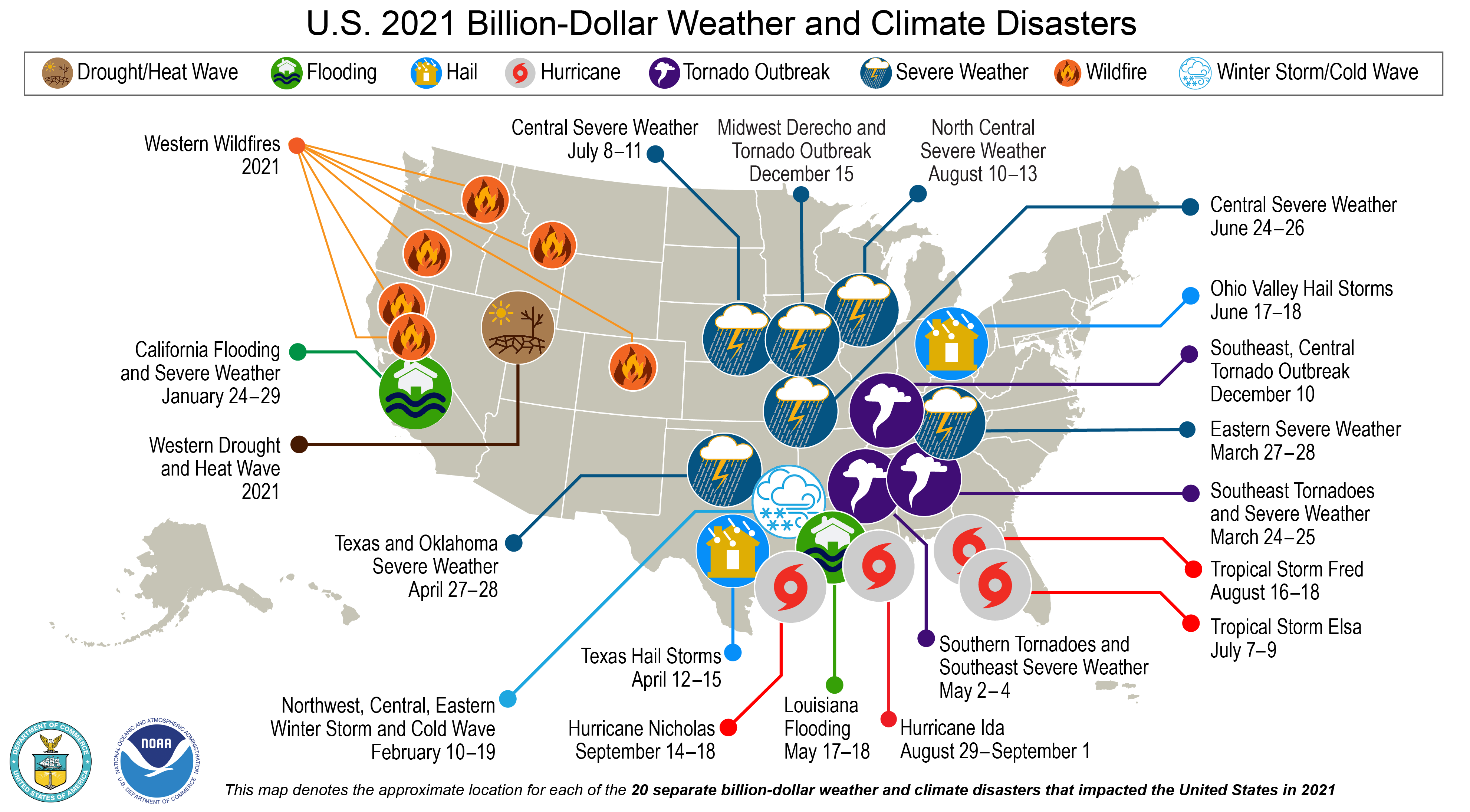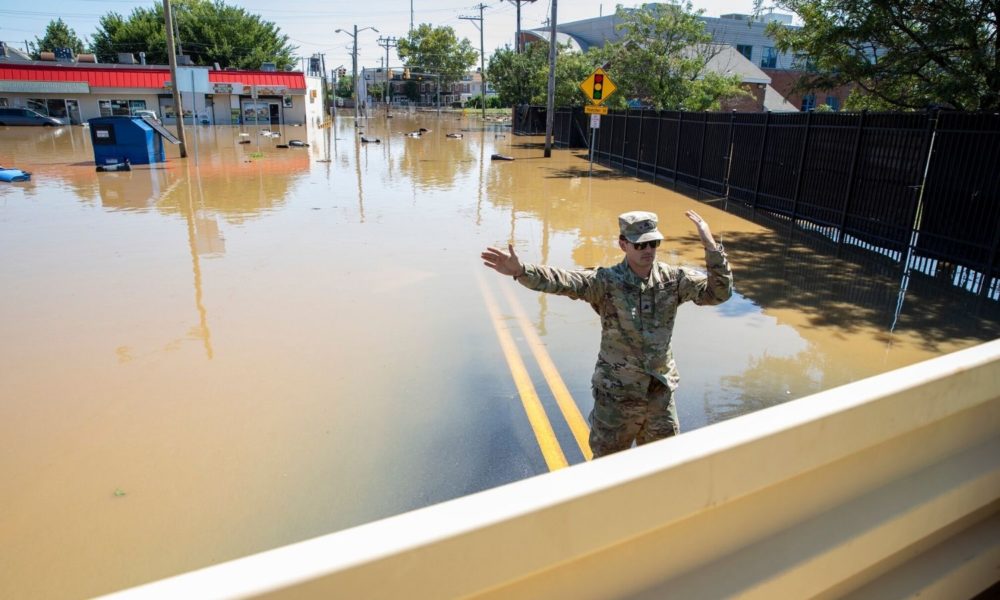This morning, the National Oceanic and Atmospheric Administration (NOAA) released a new annual report tallying the toll of billion dollar-plus extreme weather and climate related disasters in 2021. Unsurprisingly, the numbers for the year are sobering: 688 lives lost in 20 separate disasters that each cost one billion or more, with a total economic cost of at least $145 billion. These annual reports continue to show a worsening trend, ringing an alarm bell for the climate crisis. It’s time to look up and act.

What’s behind the numbers
The sobering power of the aggregate numbers highlighted in the report is undeniable. According to the NOAA data, 2021 ranks second in terms of frequency of extreme weather events, third for costliest, and it was also determined to be one of the deadliest years recorded. These disasters underscore the reality of how the climate crisis is already affecting people and the economy, and point to the urgent need for robust solutions. Behind the numbers, here are some takeaways:
- The climate crisis is here, all around us. As the map shows, people in every region of the country have been hit with climate-related disasters such as intense floods, wildfires, drought, and storms. And that doesn’t include heatwaves, which are not typically counted in these disaster statistics. A recent news report that analyzed temperature data from around the country shows that nearly 80 percent of people live in a county that experienced one or more days of abnormally high temperatures in 2021.
- These costs underestimate the true toll of climate change. Beyond loss of life and economic costs, the burden of these disasters is devastating and ongoing. Human suffering, the trauma of being hit repeatedly in some cases, the collision of climate related disasters with the COVID-19 pandemic and economic hardship, the (sometimes irreversible) damage to critical ecosystems and cultural heritage—all of these worsen the toll and are not captured in the NOAA report numbers.
- Climate disasters hurt some more than others. These disasters exert an inequitable impact. From the Texas freeze in February to Hurricane Ida in August, it’s clear that people who live in poverty, and communities of color, are far more likely to experience disproportionate harms from disasters. Further, data also show that they have historically been left behind in disaster aid to help with recovery, relative to wealthier, whiter households.
- This is a global crisis. The same climatic trends affecting the United States have caused people around the world to experience catastrophic, deadly extreme events in 2021. Deadly flooding in Germany and China, record-breaking typhoons and cyclones in the Philippines, India, and Bangladesh, and drought in Uganda, Kenya, and other parts of East Africa are just some of the disasters experienced around the world (not captured in NOAA’s report which is focused on the United States). Richer nations like the United States—which are responsible for the bulk of historical emissions—must do more to address loss and damage in developing nations that are being hard hit.
- Sharp cuts in heat-trapping emissions and investments in climate resilience are vital to curtail the worst of these disasters in the future. We simply cannot adapt to runaway climate change. Deep cuts in global warming emissions, including through a systemic shift away from fossil fuels toward a clean energy economy, are critical within this consequential decade for climate action. Passing the Build Back Better Act would be a crucial step in that direction. (Data from the Rhodium Group showing US emissions up 6.2 percent in 2021 relative to 2020 is a move in the wrong direction, to say the least.) Alongside that, we need a national climate resilience strategy commensurate with the harm we’re already experiencing and the major risks we’re facing, one that invests proactively and equitably to help protect and prepare communities ahead of disasters.
Today’s report tells us, yet again, that we are in deep trouble and it’s well past time to act on climate. A sharp downward turn in heat-trapping emissions is urgently needed—and if we do this right, that can be a tremendous boon for public health, environmental justice, good-paying high-quality jobs, and innovation. We need robust policies that accelerate the clean energy momentum already underway because current trends are just not sufficient to meet science-based emissions reduction goals. Further, we have to invest in climate resilience measures to prepare communities for the impacts already underway.
A critical, not-to-be-missed opportunity stands before us right now: Congress must pass the Build Back Better Act.

